On a sandals-weather Saturday in early March, a procession of friends wandered across Morris Brown College’s campus, over the pedestrian bridge spanning M.L.K Jr. Drive, and on to the foot of Gaines Hall, a historic brick structure now stabilized by scaffolding, the roof scorched off a half-decade ago.
As the explorers took selfies and marveled at Gaines Hall’s decrepitude, it was clear the first structure built at Atlanta University Center, the city’s collection of esteemed Historically Black Colleges and Universities, has devolved into a destination for ruin-porn enthusiasts.
How long it might remain in that condition—or standing at all—seems to be anybody’s guess.
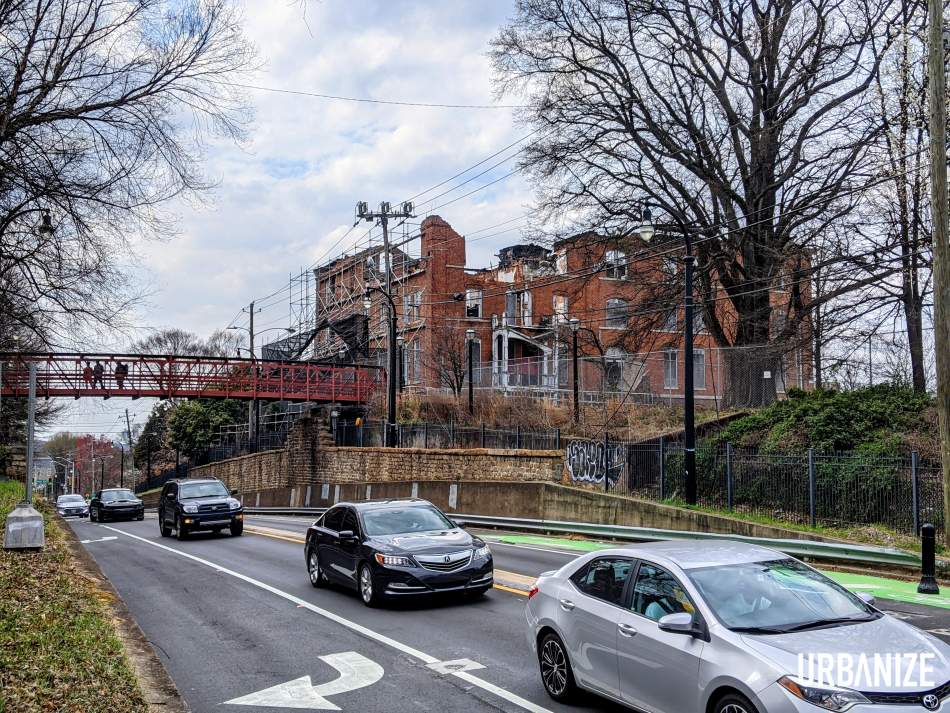 The fire-ravaged remains of Gaines Hall, as seen along M.L.K. Jr. Drive in early March. Josh Green/Urbanize Atlanta
The fire-ravaged remains of Gaines Hall, as seen along M.L.K. Jr. Drive in early March. Josh Green/Urbanize Atlanta
Quick history: Once the haunt of historic figures like W.E.B. DuBois, an Atlanta University professor, and civil rights activist Hosea Williams, an alumnus, Gaines Hall was designed by architect William Parkins and finished just four years after the Civil War.
Originally called North Hall, it was the campus’ original centerpiece and later transitioned fully to dormitories.
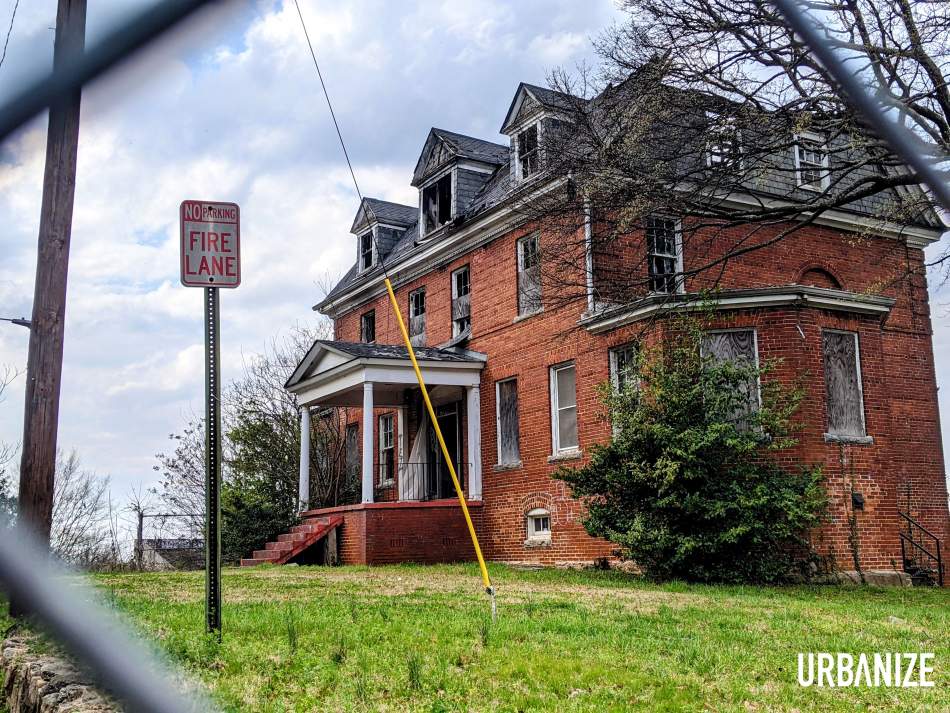 Behind Gaines Hall is vacant Furber Cottage. Josh Green/Urbanize Atlanta
Behind Gaines Hall is vacant Furber Cottage. Josh Green/Urbanize Atlanta
Morris Brown College occupied the original campus from 1932 until 2014, when the school’s bankruptcy prompted portions of the property to be sold. The following August, a fire ripped through Gaines Hall, causing damages severe enough that Atlanta Fire Department officials, citing safety concerns, recommended that it be razed. But preservationists leapt into action and kept bulldozers at bay, sparing one of Atlanta's oldest remaining buildings.
“We are going to find a way to preserve it,” former Atlanta Mayor Kasim Reed emphatically told Saporta Report a few days after the fire.
Two years later, a court ruling returned the Gaines Hall property to neighboring Clark Atlanta University, according to the Atlanta Preservation Center, which has designated the building and others on Morris Brown’s campus “endangered.”
“In terms of restoration and preservation purposes,” the APC wrote in its designation, “the future of [Gaines Hall] is still unknown.”
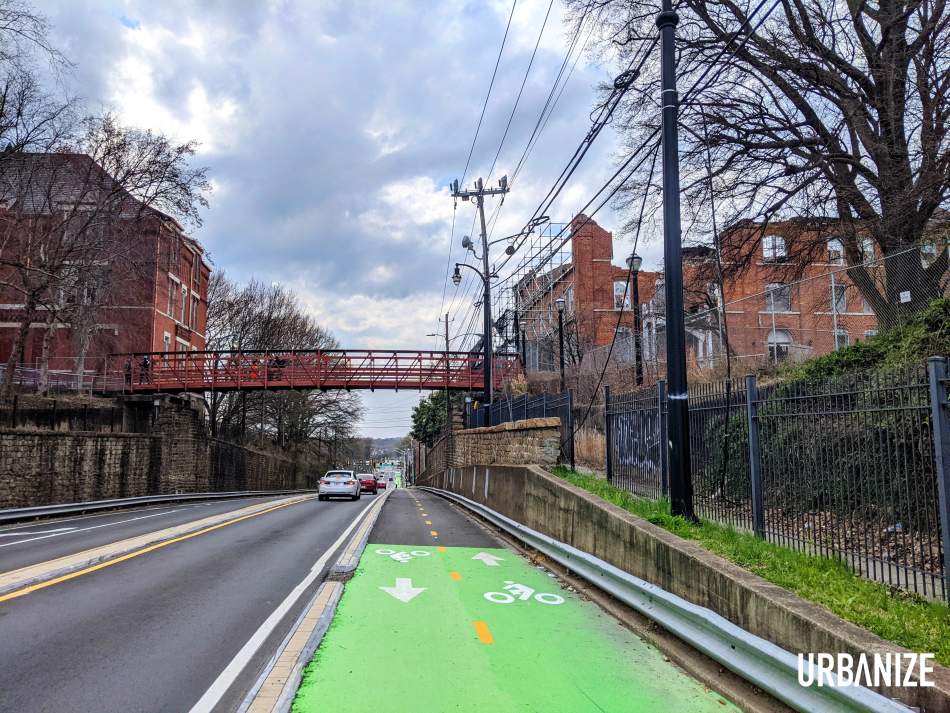 The bridge spanning recently installed bike lanes between Gaines Hall, right, and Morris Brown College's Fountain Hall. Josh Green/Urbanize Atlanta
The bridge spanning recently installed bike lanes between Gaines Hall, right, and Morris Brown College's Fountain Hall. Josh Green/Urbanize Atlanta
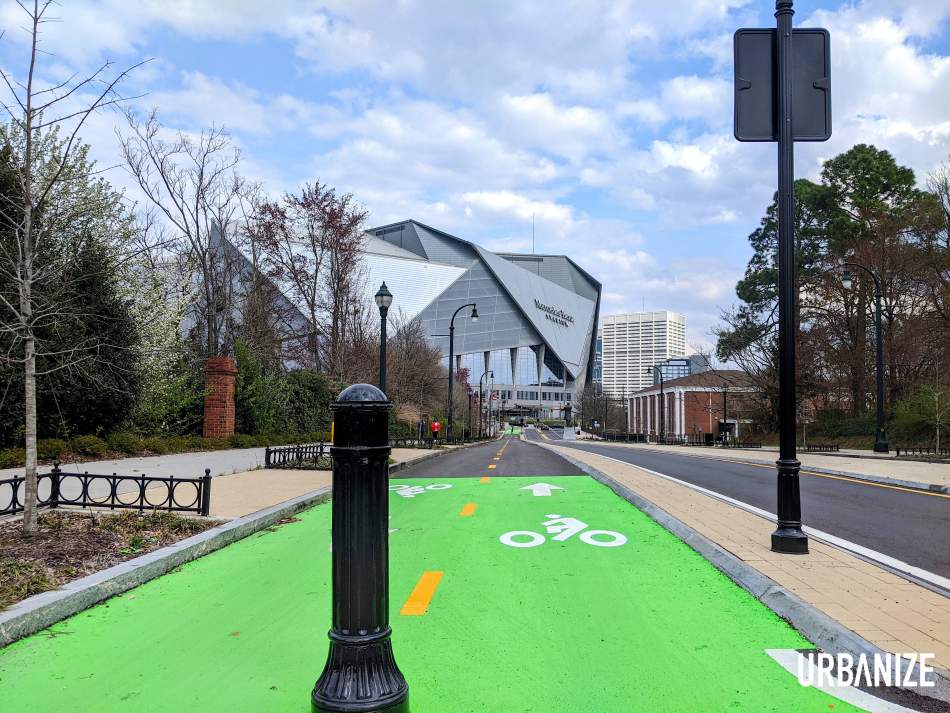 Looking east from the same location illustrates the historic structures' proximity to Mercedes-Benz Stadium and the rest of downtown. Josh Green/Urbanize Atlanta
Looking east from the same location illustrates the historic structures' proximity to Mercedes-Benz Stadium and the rest of downtown. Josh Green/Urbanize Atlanta
The announcement last month that CGI Merchant Group, a global investment management firm, is planning a $30-million investment to convert Morris Brown facilities into a hotel and student training complex got us wondering about the status of Gaines Hall and ancillary structures near it.
Dr. Kevin James, Morris Brown’s president, relayed some recent good news relating to the school’s Fountain Hall, built in 1882 and still poised, albeit vacant, across the street from Gaines Hall.
A National Park Service African American Civil Rights Grant provided $500,000 for a newly completed roof and repair of Fountain Hall’s iconic clock tower, all rendered in a historically appropriate way to reflect the original appearance.
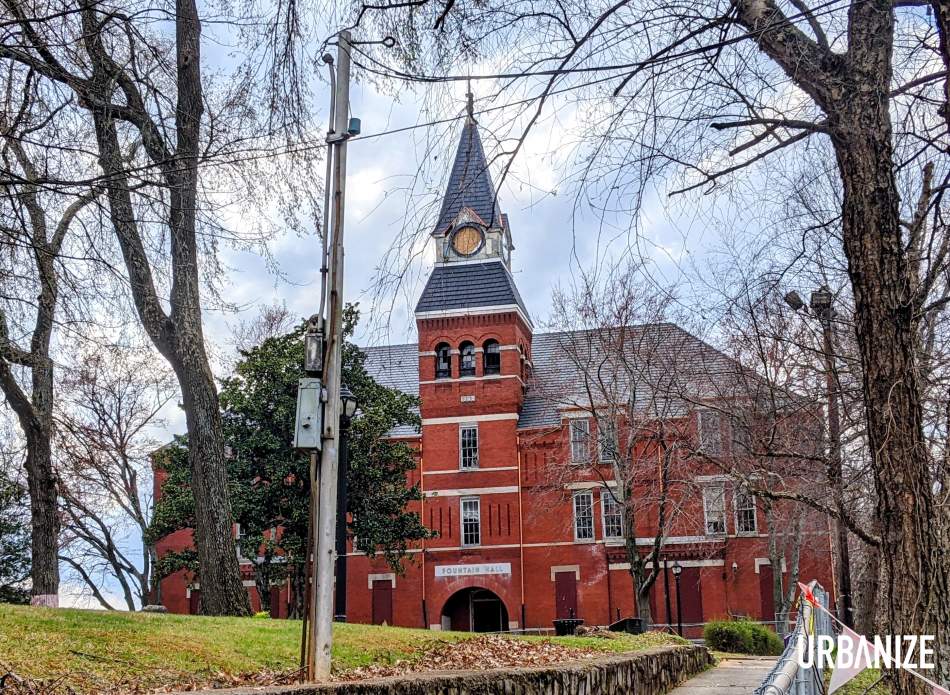 Fountain Hall's clock tower and stone roof are being updated to mirror the original 1882 appearance. Josh Green/Urbanize Atlanta
Fountain Hall's clock tower and stone roof are being updated to mirror the original 1882 appearance. Josh Green/Urbanize Atlanta
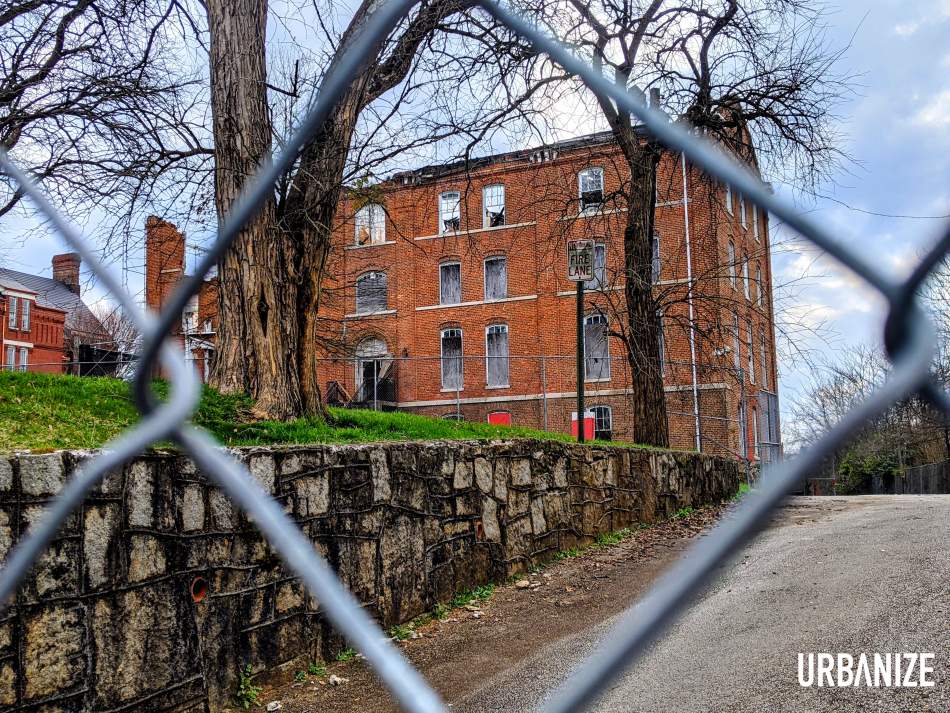 No such luck for Gaines Hall's roof.Josh Green/Urbanize Atlanta
No such luck for Gaines Hall's roof.Josh Green/Urbanize Atlanta
James referred all questions about Gaines Hall and other crumbling structures around it to Clark Atlanta University, the owner.
Clark Atlanta officials didn’t respond to inquiries this week regarding plans for Gaines Hall or its current status.
The Georgia Trust for Historic Preservation, another group that’s taken keen interest in Gaines Hall, has warned that with Atlanta’s “focus on revitalizing the surrounding Vine City neighborhood, the pressure to raze vacant historic buildings for future development is a serious threat.”
APC executive director David Mitchell called the historic structures’ plight a complex mix of deferred maintenance, neglect, and preservation economics that can seem “overwhelming.”
“The biggest thing is, you have a challenge of identity. How do you want to discuss Atlanta through these buildings?” Mitchell recently told Urbanize Atlanta. “These buildings are our visual language.”
Another factor is a migration of college students of color across downtown to growing Georgia State University. The outcome, as Mitchell sees it, is a classic Atlanta duality.
“We graduate through Georgia State University more Black students than any institution in the country,” Mitchell said. “But we also have the largest collection of African-American structures dedicated to Black education in challenged condition. Now how does that work?”
• Vine City flipper: $239K cottage, like other properties, sold before it listed (Urbanize Atlanta)






